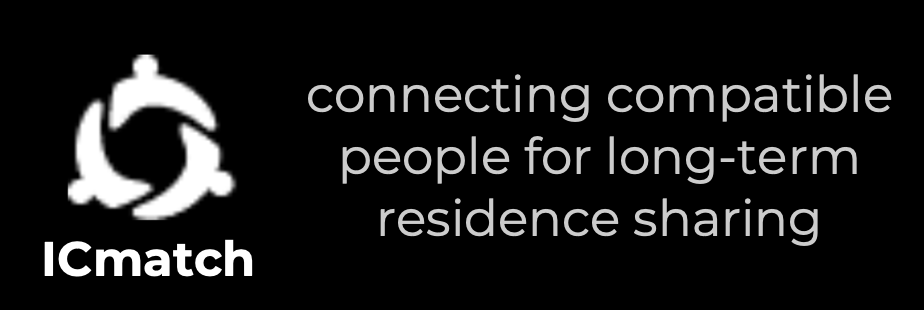
With this issue, we return to Allen Press in Lawrence, Kansas, our printer for a decade-and-a-half (from issues #105 through #165). For the last seven issues we’ve tried a different format (including 100 percent post-consumer recycled paper throughout) with a different printer (the only one we found who could offer us this paper option), but unfortunately our idealism led to a prohibitively high cost-per-copy. With the Foundation for Intentional Community facing significant financial shortfalls, we cannot afford to continue in that format, so we are cutting printing costs by more than a third by returning to partial-recycled-content paper with Allen Press, while still retaining full color throughout (our previous run with Allen Press included only black-and-white inner pages). The new format also features slightly heavier paper, which allows it to be self-covering—another cost savings.
For decades, Communities and the FIC have been vital resources, both for the communities movement and for the broader effort to develop more cooperative, resilient ways of living together on this finite planet. Our publications offer critical documentation, information, and lessons from people who have been confronting “future challenges” for many years. My advice for people who, in preparation for an uncertain future on our home planet, dream of living in a colony on Mars? Read through the Best of Communities collections, for starters, and subscribe to the magazine as well. Our biggest challenges as a species will always be how to live together in healthy ways, to form communities in which love, compassion, and understanding outweigh mutual exasperation, outright animosity, or worse. These arts of cooperative living are not “rocket science,” but they’ll be just as important if we’re to have any future in outer space, let alone on earth. And they’re more important than rocket science, if we want to have any hope of keeping our own planet habitable.
You can help Communities and the FIC return to sound financial footing by supporting us with your purchases—of magazine subscriptions, books, and other resources—and your donations. Every gift you give of an FIC product is not only a gift to someone(s) you care about, but a vote for the kind of information, stories, networking, and services that our organization offers and helps facilitate in the wider world. You can help the magazine and its parent organization be more than a “still, small voice” of sanity, known to you and a limited number of others but mostly drowned out in the larger culture. You can help others discover us and the world of cooperative exploration that offers almost unimaginable potential for a brighter future, if shared broadly enough. Resigning oneself to a deadening “status quo,” in a culture that in many ways brings out the worst in human nature, is a failure of imagination. Communities and the FIC are dedicated to reawakening that imagination—that knowledge that every human being has that we’re not here to live in a state of alienation, separation, misery, futility. We are unique, alive creatures, looking for reconnection. And to find it, we need to remind each other that it’s possible, and share our dreams, gifts, and insights with one another.
The FIC is about this kind of connection—not the “disposable” type of connection which can dominate both social and mainstream media, but the abiding connections we discover when we come together in cooperative endeavors and face hard, as well as easy, issues with one another.
● ● ●
This edition’s original theme, “Public vs. Private,” ended up attracting fewer submissions than anticipated. If my own experience is any indication, this may have been because it was too “hot” a topic for some, rather than too “cool” a topic. Among the questions we asked potential contributors:
● If you live in an intentional community, how accessible and exposed to the public does your group wish to be? And how protected do you want to be?
● Does your group welcome visitors, interns, and/or other short-term residents? If so, what are the boundaries around their visits and involvement?
● Does your group operate a business (for example, conference, retreat, event, or educational center) that brings in the public on a regular basis? If so, what issues arise from this within your community?
● How much publicity does your group seek?
● How public is your group’s mission?
● What remains private to your group? What do you not want anyone to know?
● On another level, how “public” vs. “private” are individuals’ lives within your community? How much do members know about one another?
● How are concepts like privacy and confidentiality weighed against desires for openness, transparency, and a shared emotional intimacy within your group?
● How much do members of your community desire or expect to become involved in one another’s daily lives? Are you more like a close-knit family, a neighborhood, a village, or a collection of residences?
● On a broader social level, how do these same questions of “public” vs. “private” play out in your neighborhood, within your networks of friends, and in larger circles and communities in which you are involved?
Every community I’ve been a part of has wrestled with these questions, and the very nature of the issues involved means that some stories that arise out of this public/private dilemma will never be told publicly (being too private). In preparation for this issue, I myself struggled with the desire to share stories which I ultimately decided against telling for fear of the repercussions, whether through perceived invasions of privacy or revelation of information that in the wrong hands could be used against particular groups. I’ve lived in two communities that wrestled with major zoning issues (a topic explored more fully in “Community and the Law,” issue #168), where a desire for openness conflicted with both fear and paranoia about the consequences of getting too familiar with neighbors who might turn against us and jeopardize our ability to exist legally. I’ve lived in several communities where the impulse to welcome in the public (and therefore maintain standards that would be relatively acceptable in the mainstream) butted up against the desire to live according to a set of beliefs or preferences that sometimes flew in the face of societal norms—or where a love of having outsiders share our home conflicted with desires for greater intimacy within the group and for protection from outside intrusion on the sanctuary provided by community-only space.
Never in my experience have all members felt the same way about these issues; the “community extroverts” and “community introverts” (in all different senses of those words) always come in a mix, and have different needs and desires. Navigating those disparate preferences is one of the arts of living in an intentional community with a public interface—a description that applies, in some sense, to every community that considers itself a part of the “communities movement.” The stories herein give a taste of how some communities grapple with these issues.
● ● ●
Part way through our article-gathering phase, we expanded to theme to include “Social Permaculture,” for which we asked these questions:
● What methods does your group use to create social permaculture—where your relationships with one another are just as sustainable, regenerative, and resilient as the ecological elements in a land-based permaculture system?
● How can personal growth modalities, well-being practices, communication techniques, collaborative strategies, and other elements of shared community life help create a more permanent culture both on the small scale and on the large scale?
● How do you enact the ethics and principles of permaculture—including “care for people,” “observe and interact,” “apply self-regulation and accept feedback,” “integrate rather than segregate,” “value diversity,” and others—in the design of your social systems and in your dealings with one another?
● How does your community cultivate social permaculture in your relationships with others in your region?
As we hoped, the articles in this section provide clues about how to approach not only the “public vs. private” dynamic, but also many other community challenges. As noted earlier, without cooperative skills, all the technical expertise in the world (or even on another world) will not assure human thriving or even survival. Social permaculture (by that name or any other) is critical to the successful practice and maintenance over the long-term of any land-based permaculture system, of any intentional community, and ultimately of any human endeavor whatsoever. We’re grateful that some of the leading lights in the movement for social permaculture chose to share their insights in our pages.
● ● ●
Thanks again for joining us…and don’t forget to “shop FIC” this season so that our own social permaculture work can endure. We, and future beneficiaries of the FIC’s work, thank you in advance.
Chris Roth edits Communities.















